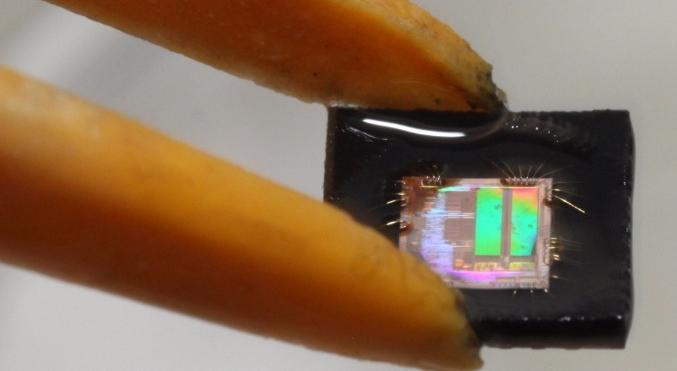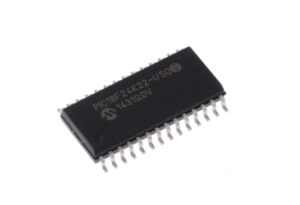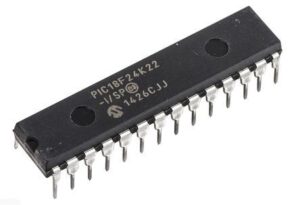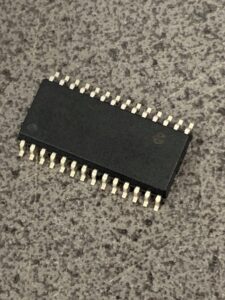 Microchip PIC18F24K22 Locked Flash Memory Code Recovery
Microchip PIC18F24K22 Locked Flash Memory Code Recovery
Microchip PIC18F24K22 Locked Flash Memory Code Recovery needs to crack mcu pic18f24k22 protective system and read the embedded heximal out from microcontroller flash memory;

Besides its availability as a clock source, the internal oscillator block provides a stable reference source that gives the family additional features for robust operation:
- Fail-Safe Clock Monitor: This option constantly monitors the main clock source against a reference signal provided by the LFINTOSC. If a clock failure occurs, the controller is switched to the internal oscillator block, allowing for continued operation or a safe application shutdown.

Microchip PIC18F24K22 il recupero del codice della memoria flash bloccata deve decodificare il sistema di protezione PIC18F24K22 MCU protetto e leggere il firmware incorporato dei dati esamidali o del programma binario dal microcontrollore PIC18F24K22 dalla memoria flash e dalla memoria eeprom;
Two-Speed Start-up: This option allows the internal oscillator to serve as the clock source from Power-on Reset, or wake-up from Sleep mode, until the primary clock source is available.
- Memory Endurance: The Flash cells for both program memory and data EEPROM are rated to last for many thousands of erase/write cycles – up to 10K for program memory and 100K for EEPROM attacked by brutel force. Data retention without refresh is conservatively estimated to be greater than 40 years.
- Self-programmability: These devices can write to their own program memory spaces under inter- nal software control. By using a bootloader routine located in the protected Boot Block at the top of program memory, it becomes possible to create an application that can update itself in the field.

Odzyskiwanie kodu zablokowanej pamięci flash PIC18F24K22 mikroprocesora wymaga dekodowania zabezpieczonego systemu ochronnego MCU PIC18F24K22 i odczytu wbudowanego oprogramowania układowego danych szesnastkowych lub programu binarnego z mikrokontrolera PIC18F24K22 pamięci flash i pamięci EEPROM;
- Extended Instruction Set: The PIC18(L)F2X/ 4XK22 family introduces an optional extension to the PIC18 instruction set, which adds 8 new instructions and an Indexed Addressing mode. This extension, enabled as a device configuration option, has been specifically designed to optimize re-entrant application code originally developed in high-level languages, such as C.
- Enhanced CCP module: In PWM mode, this module provides 1, 2 or 4 modulated outputs for controlling half-bridge and full-bridge drivers. Other features include:
- Auto-Shutdown, for disabling PWM outputs on interrupt or other select conditions
- Auto-Restart, to reactivate outputs once the condition has cleared

رقاقة PIC18F24K22 استعادة رمز ذاكرة فلاش مقفلة يحتاج إلى فك تشفير MCU الآمن PIC18F24K22 نظام الحماية وقراءة البرامج الثابتة المضمنة للبيانات السداسية أو البرنامج الثنائي من متحكم PIC18F24K22 ذاكرة فلاش وذاكرة eeprom ؛
Output steering to selectively enable one or more of 4 outputs to provide the PWM signal